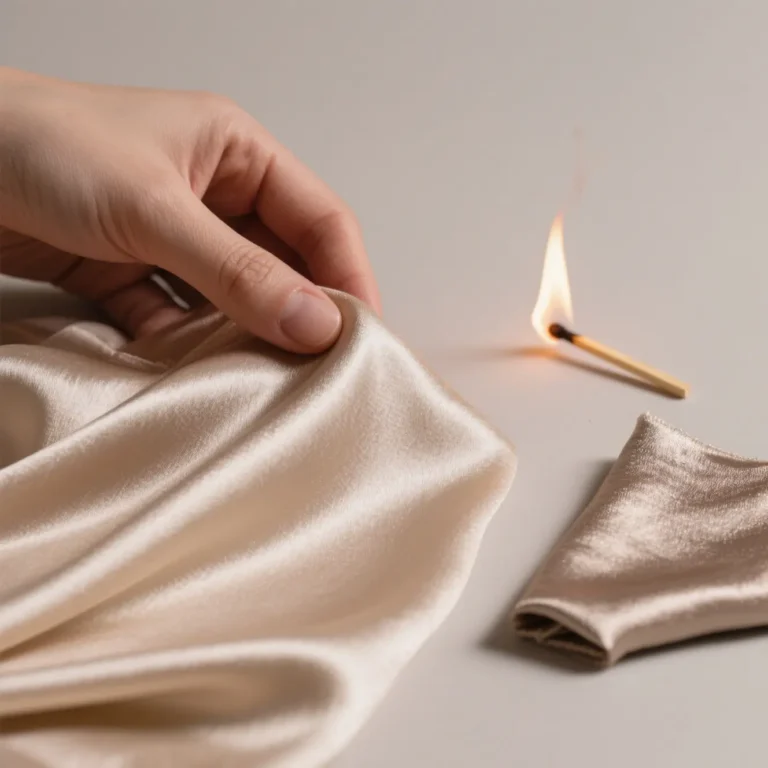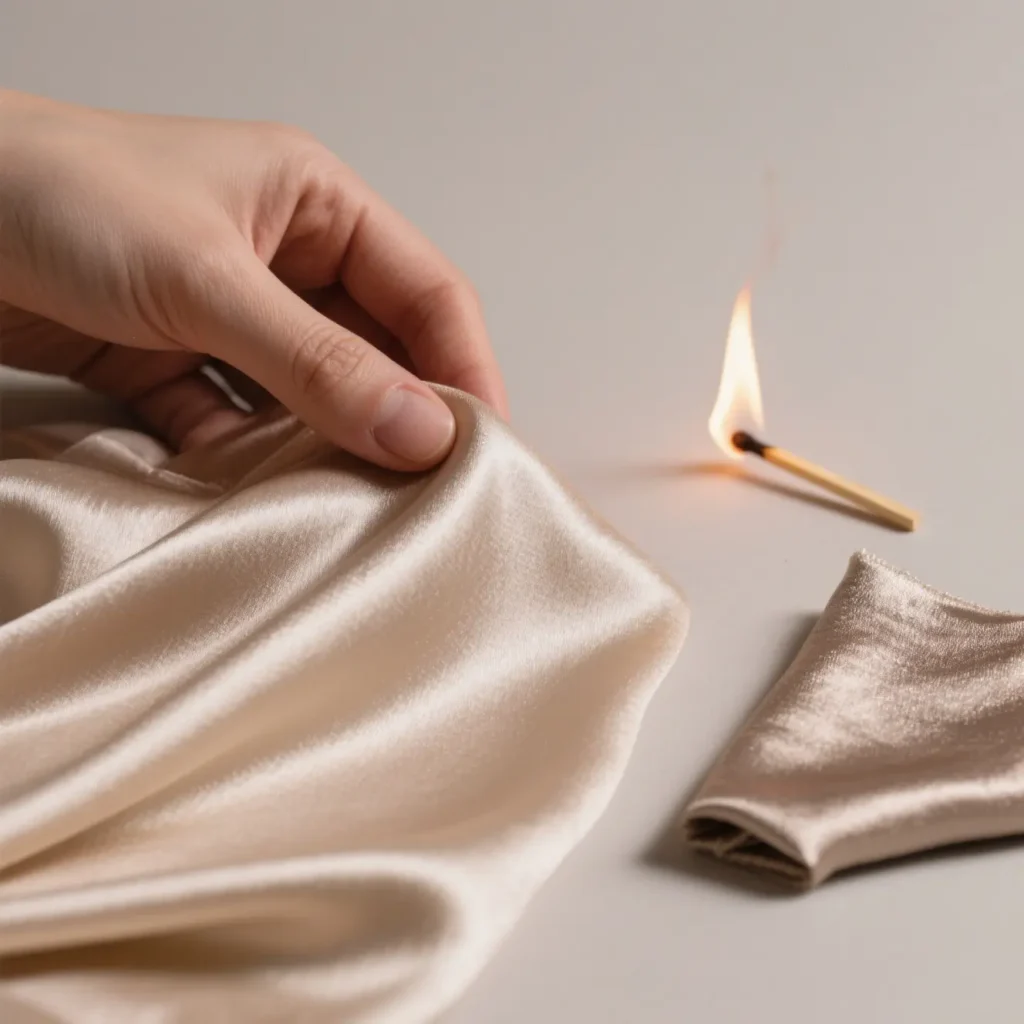Physical Address
304 North Cardinal St.
Dorchester Center, MA 02124
Physical Address
304 North Cardinal St.
Dorchester Center, MA 02124


In the sweltering heat of summer, silk has emerged as the go-to material for clothing, and it’s not hard to see why. Its natural breathability and smooth texture make it a comfortable choice, draping gracefully over the body and allowing air to circulate, keeping you cool even on the hottest days. When browsing through stores, we’re often greeted with products proudly labeled “real silk,” leading many consumers to assume they’re getting high-quality mulberry silk. However, the world of silk is not as straightforward as it seems.
Silk, a material that has been cherished for centuries, is far more diverse than one might think. It encompasses a range of different fibers, such as mulberry silk, tussah silk, castor silk, and cassava silk. All of these are protein fibers, with silk fibroin being rich in amino acids that work wonders for the skin. These amino acids help in the metabolism of the lipid membrane on the skin’s surface, leaving your skin feeling soft and nourished.
There’s a vast array of silk fabrics, each with its own unique characteristics. Plain wrinkled satin, a common choice for pajamas, is known for its smoothness and the subtle texture that gives it a touch of elegance. Georgette is lightweight and sheer, perfect for creating flowing, feminine garments. Double wrinkle fabric lives up to its name, with a double layer that adds depth and a unique wrinkled effect. Mulberry satin is lustrous and luxurious, often used for high-end evening wear. Electric spinning and taffeta also have their own distinct feels and lusters, making them suitable for various applications, from formal dresses to delicate scarves.
Silk, that marvel of silk spinning, is often crafted from defective cocoons and waste silk generated during sericulture, silk making, and silk weaving processes. Despite its humble origins, it is transformed into a thing of beauty. With a count typically as high as 50/2 to 240/2, it boasts a moist luster and a softness that is simply divine. This makes it an ideal choice for creating light, soft high-end fabrics that drape beautifully. It can also be processed into fine sewing silk and embroidery silk, adding a touch of luxury to any stitching project.
Due to the relatively high cost of genuine silk, which is a result of the intricate production process and the limited supply of raw materials, imitation silk has found its way into the market. These imitations mainly use chemical filaments as their raw materials. Polyester fibers, commonly known as polyester, are a popular choice for creating these look-alike products. Some imitation silk also incorporates regenerated cellulose fibers like viscose. However, these substitutes often fall short in terms of functionality. Their moisture absorption and breathability are generally poor compared to real silk, meaning they can’t provide the same level of comfort, especially in hot and humid conditions.
The market is now flooded with a wide variety of silk products, making it increasingly challenging to distinguish between the real deal and the fakes. It’s not uncommon to find chemical fibers masquerading as real silk, and more often than not, extremely cheap “silk” products are likely to be made of imitation materials. So, how can consumers safeguard themselves and ensure they’re getting the real thing?
Professionals from the Suzhou Fiber Inspection Institute have shared five tried-and-true methods to help buyers determine the authenticity of silk.
The surface luster of real silk is a giveaway. It has a bright yet soft quality that is truly unique. When light hits real silk, it reflects in a way that is both eye-catching and soothing to the eye. In contrast, imitation silk may be bright, but it lacks that gentle, natural luster. Real silk has a certain depth to its shine, almost like a pearl, which imitation silk simply can’t replicate. For example, when comparing a real silk scarf to an imitation one side by side, the real silk will stand out with its more refined and appealing luster.
Real silk feels like a dream against the skin. It’s soft, smooth, and when you gently stroke the surface with your hand, you’ll notice a subtle pulling feeling. This is due to the nature of the silk fibers. Imitation silk, on the other hand, often feels a bit tougher. If the real silk is dry, there’s an interesting phenomenon that occurs. When you pinch the silk and rub the pieces together, it makes a sound similar to walking on fresh snow. This is a characteristic unique to dry silk. Additionally, silk does wrinkle easily, but this isn’t a sign of poor quality. In fact, there’s an old saying, “no wrinkles, no silk,” which reflects the natural behavior of this delicate fabric. When you hold a real silk garment and an imitation one, the difference in texture and the way they wrinkle or resist wrinkling is quite evident.
This method may seem a bit extreme, but it’s highly effective. Take a single strand of silk yarn from the edge of the fabric. Using a match, carefully light it. Silk fibers burn slowly, curling up into a ball as they do. They emit a distinct smell, similar to that of burnt hair or bird feathers. This is because silk, like hair, is a protein-based material. Once the silk bundle is removed from the flame, it stops burning immediately, and the residue can be easily crushed into powder with a gentle press of the hand. In contrast, polyester fibers, commonly used in imitation silk, have a sweet smell when burning. Their residues are hard, black beads that are difficult to crush. Viscose and other cellulose fiber filaments, when burned, give off a burning smell similar to paper, and their residues are a slightly grayish-white ash. For instance, if you have a piece of fabric that you suspect might be fake silk, taking a small sample and performing this burn test can quickly reveal its true nature.
This method requires a bit of caution as it involves using a potentially harmful substance, but it’s a reliable way to tell real silk from fake. Take a small amount of silk fiber and place it in “84” disinfectant. Real silk will completely dissolve in the disinfectant. However, fibers like polyester and viscose will not. This is because of the chemical composition of silk, which reacts with the disinfectant in a way that these other fibers do not. But remember, when conducting this experiment, always take proper safety precautions, such as wearing gloves and working in a well-ventilated area.
This method is a bit more technical and may require some equipment, but it provides a definitive way to identify silk. The cross-section of mulberry silk has a triangular shape. This unique shape is a result of the way the silk is formed in the cocoon. Ordinary polyester silk, on the other hand, has a round cross-section, and its longitudinal surface appears smooth. For viscose fibers, the edges of their cross-section are serrated, and the longitudinal surface is smooth with clear stripes. If you have access to a microscope, taking a look at the cross-section of a fiber can quickly tell you whether it’s real silk or an imitation.
Domestic silk products use a unified five-digit Arabic numeral product number. The first digit of this number is particularly important as it represents the fabric material. For all-silk fabrics, including those made from mulberry silk and spun silk, the material number is usually “1”. Chemical fiber fabrics, on the other hand, have a “2” as the first digit. By checking the product number on the label of a silk item, you can get a quick indication of its authenticity.
It’s also important to note that imported silks sold on the market often don’t contain any silk ingredients at all. Products like georgette (even though there are real silk versions, many imported ones are not), Rouzisha Zhuliwen, etc., are actually chemical fiber fabrics. So, don’t be misled by the names; always check the labels carefully.
Price is an important factor to keep in mind when identifying silk fabrics. Generally, silk fabrics are about twice as expensive as chemical fiber and simulated silk satin. If a product is priced too cheaply and claims to be silk, it’s likely to be a fake. However, just because a product is expensive doesn’t necessarily mean it’s silk. There are many overpriced imitation products on the market. Therefore, it’s essential to use a combination of multiple identification methods to make a well-informed judgment.
In conclusion, while the market may be filled with silk imitations, armed with these identification methods, consumers can make more confident choices and enjoy the luxurious feel and quality of real silk.